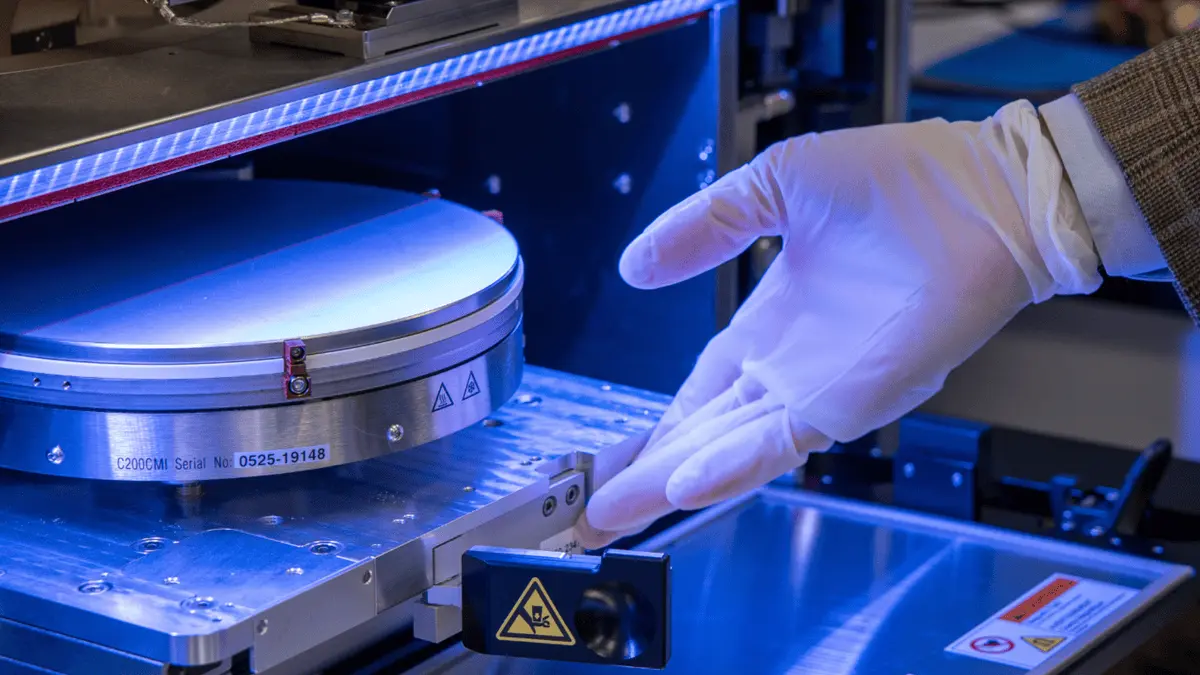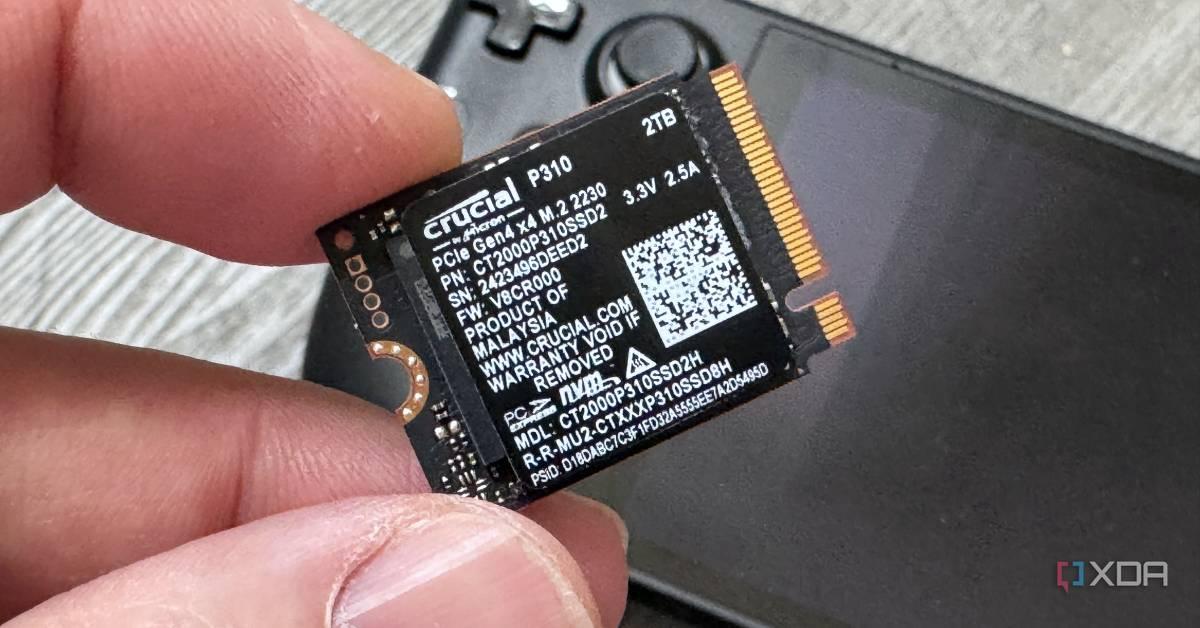IBM Unveils LinuxONE Emperor 5: A Mainframe Powerhouse for AI and Enterprise Computing
2 Sources
2 Sources
[1]
IBM introduces a mainframe for AI: The LinuxONE Emperor 5
When you think of mainframes, you probably think of spinning tape drives, reams of computer cards, and text-only, green-on-black 3270 terminals. IBM's latest mainframe, the LinuxONE Emperor 5, is not your grandpa's mainframe The fifth generation of its flagship LinuxONE platform, the IBM LinuxONE Emperor 5, is engineered to deliver unprecedented levels of security, cost-efficiency, and AI acceleration for mission-critical enterprise workloads. Powered by the new IBM Telum II processor, the system is set to transform how organizations approach Linux, data, and AI in the hybrid cloud era. Also: AI agent deployments will grow 327% during the next two years. Here's what to do now The Telum II is the heart of this 21st-century mainframe. Manufactured using Samsung's 5 nm process technology, Telum II features eight high-performance cores running at 5.5GHz, a 40% increase in on-chip cache capacity (with virtual L3 and L4 caches expanded to 360MB and 2.88GB, respectively), and a dedicated, next-generation on-chip AI accelerator capable of up to 24 trillion operations per second (TOPS)-four times the compute power of its predecessor. Looking ahead, for AI users who want the most, the new mainframe also supports the IBM Spyre Accelerator. It contains 32 AI accelerator cores that will share a similar architecture to the AI accelerator integrated into the Telum II chip. Multiple IBM Spyre Accelerators can be connected to the I/O Subsystem of IBM Z and IBM LinuxONE via PCIe. The Spyre is expected to start shipping in 2025's last quarter. Of course, you need software to make all this work. The updated AI Toolkit for IBM LinuxONE, optimized for Telum II, streamlines developer productivity and AI deployment. A technology preview of Red Hat OpenShift AI and OpenShift Virtualization on LinuxONE 5 is now available, allowing clients to manage both traditional VMs and containerized workloads through a unified interface on OpenShift Container Platform. The IBM LinuxONE 5 also comes with advanced security features tailored for the evolving threat landscape. The platform extends IBM's end-to-end cybersecurity approach. For example, it comes with confidential computing. With this, even when your data is in memory, it's encrypted. It also comes with NIST-standardized post-quantum cryptographic algorithms. On top of that, it comes with a cutting-edge hardware security module and support for confidential containers, integrated with Red Hat OpenShift Container Platform to ensure sensitive AI models and data remain protected, even in the face of harvest-now, decrypt-later attacks anticipated in the post-quantum era. Integration with IBM Vault Self-Managed further strengthens secrets management across hybrid environments. With a focus on operational efficiency, IBM LinuxONE 5 enables organizations to consolidate workloads from multiple servers onto a single high-capacity system. This consolidation can reduce, IBM claims, the total cost of ownership by up to 44% over five years compared to x86 alternatives. The system is designed to deliver up to 99.999999% availability, supporting business continuity and risk reduction while addressing the demands of data-intensive, AI-enabled businesses. Also: The best AI for coding in 2025 (including two new top picks - and what not to use) In short, as Tina Tarquinio, Chief Product Officer, IBM Z and LinuxONE, said, "With this launch, we're delivering a platform that not only meets today's security and efficiency challenges but is ready for the next wave of AI-driven innovation." Oh last, but never least, the LinuxOne Emperor 5 will, like the name says, run Linux. Red Hat Enterprise Linux (RHEL) for LinuxOne, to be exact.
[2]
IBM LinuxONE 5 and Ubuntu Server, a great combination from day one | Ubuntu
Today, IBM announced the launch of their latest server: the new IBM LinuxONE Emperor 5. This fifth generation redefines IBM's LinuxONE system as their most secure and high-performing Linux computing platform for data, applications and trusted AI. Canonical supports LinuxONE Emperor 5 with Ubuntu Server. Ubuntu is cost-efficient and easy to install and manage on the servers - all whilst enabling the most up-to-date LinuxONE hardware features. Ubuntu Server for IBM Z and LinuxONE is ready for deployment from day one. This blog provides an overview of the IBM LinuxONE Emperor 5's key features, and will demonstrate why Ubuntu Server is the right choice of software to install. The new system was developed towards three main aspects and goals: IBM LinuxONE Emperor 5 lets users deploy confidential containers, and use quantum-safe encryption which can be scaled and unified across an enterprise. Ubuntu Server for IBM Z and LinuxONE is also designed with security in mind, making the perfect fit for the security features of the IBM LinuxONE 5 generation hardware. Canonical uses high security cryptography algorithms and disables weak cryptography algorithms by default. Ubuntu Server for IBM Z and LinuxONE is one of the very first Linux distributions that introduced Secure Execution support (since 20.04), and provides support for pervasive encryption in all dimensions, be it data at-rest, in-flight, or in-use. Ubuntu Server for IBM Z and LinuxONE supports quantum-safe cryptography, requiring only two commands to do so, and making use of the IBM LinuxONE 5 generation's quantum-safe encryption becomes a transparent and easy process. Canonical's Kernel Livepatch service (Pro) delivers kernel patches for high or critical vulnerabilities that can be applied to a running kernel, without needing immediate downtime, so the system can continue running. Ubuntu is built for compliance, and has various security certifications including FIPS. These are only the beginning - you can learn more about the wealth of inherent Ubuntu Security Features in our wiki. IBM's enterprise class of LinuxONE systems is renowned for its large-scale workload consolidation which can result in significant savings on energy, space, and operational costs. These strengths improve with each new hardware generation, as overall resources and performance increase whilst maintaining the system's maximum energy consumption at a steady level. IBM LinuxONE Emperor 5 includes up to 208 customer cores, up to 64TB of memory, and introduces a simplified system IO architecture. By choosing Ubuntu Pro to run on the IBM servers, you can get Expanded Security Maintenance for open source at a transparent rate with our unique drawer-based pricing. Learn more about the benefits of an Ubuntu Pro subscription here. On the IBM LinuxONE Emperor 5, you can develop AI models in a hybrid cloud and run inference alongside data and applications within a trusted execution environment (TEE), enhancing prediction accuracy using a multiple model AI approach with the integration AI accelerator in Telum II, and scale AI while maximizing energy efficiency. In addition, the previously announced Spyre is expected to become available in 2025, and will enable Generative AI applications to be developed and run. Ubuntu is a popular choice for most AI and machine learning researchers. Ubuntu balances ease of use, compatibility with the larger AI stacks and popular frameworks, and support from the open-source community or commercial support through Ubuntu Pro. Canonical is working hard to ensure Telum II (of LinuxONE 5) and the upcoming Spyre Accelerator card are supported on Ubuntu Server, allowing users to deploy a multiple AI model approach in the future and as well as hardware-assisted generative AI. After 9 years of LinuxONE and IBM Z (s390x) platform support, Canonical is proud that Ubuntu Server plays a central role in open source workloads, helping to make LinuxONE 5 generation easier to use, more secure, more reliable, and available to all at scale. For more information about IBM LinuxONE Emperor 5, visit www.ibm.com/products/linuxone-5 Or if you have any questions, you can contact us directly: Valerie Noto, Alliance Business Director - [email protected] Frank Heimes, Staff Engineer - [email protected]
Share
Share
Copy Link
IBM introduces the LinuxONE Emperor 5, a cutting-edge mainframe designed for AI acceleration, enhanced security, and cost-efficient enterprise workloads, powered by the new Telum II processor and optimized for Linux environments.

IBM Introduces LinuxONE Emperor 5: A New Era of Mainframe Computing
IBM has unveiled its latest mainframe, the LinuxONE Emperor 5, marking a significant leap in enterprise computing technology. This fifth-generation platform is designed to meet the evolving needs of businesses in the age of AI and hybrid cloud environments
1
.Powerful Hardware for AI Acceleration
At the heart of the LinuxONE Emperor 5 lies the new IBM Telum II processor. Manufactured using Samsung's 5nm process technology, the Telum II boasts impressive specifications:
- Eight high-performance cores running at 5.5GHz
- 40% increase in on-chip cache capacity
- Dedicated on-chip AI accelerator capable of up to 24 trillion operations per second (TOPS)
This represents a fourfold increase in compute power compared to its predecessor, positioning the LinuxONE Emperor 5 as a formidable platform for AI workloads
1
.Enhanced Security Features
In response to the evolving threat landscape, IBM has integrated advanced security measures into the LinuxONE Emperor 5:
- Confidential computing capabilities, ensuring data encryption even in memory
- NIST-standardized post-quantum cryptographic algorithms
- Cutting-edge hardware security module
- Support for confidential containers, integrated with Red Hat OpenShift Container Platform
These features are designed to protect sensitive AI models and data, even against potential future threats such as quantum computing attacks
1
2
.Optimized for Linux and Open Source
True to its name, the LinuxONE Emperor 5 is optimized for Linux environments. It supports Red Hat Enterprise Linux (RHEL) for LinuxONE and Ubuntu Server from day one. Canonical, the company behind Ubuntu, has ensured that Ubuntu Server is fully compatible with the new hardware, offering:
- Cost-efficient and easy installation and management
- Support for the latest LinuxONE hardware features
- Enhanced security features aligned with the platform's capabilities
2
AI Toolkit and Software Ecosystem
To leverage the hardware capabilities, IBM has updated its AI Toolkit for LinuxONE, optimized for the Telum II processor. Additionally, a technology preview of Red Hat OpenShift AI and OpenShift Virtualization on LinuxONE 5 is now available, allowing clients to manage both traditional VMs and containerized workloads through a unified interface
1
.Related Stories
Cost Efficiency and Performance
IBM claims that the LinuxONE Emperor 5 can reduce total cost of ownership by up to 44% over five years compared to x86 alternatives. The system is designed to deliver up to 99.999999% availability, supporting business continuity and risk reduction while addressing the demands of data-intensive, AI-enabled businesses
1
.Future-Ready with Spyre Accelerator
Looking ahead, IBM has announced the upcoming IBM Spyre Accelerator, expected to start shipping in the last quarter of 2025. This accelerator will contain 32 AI accelerator cores, further enhancing the system's AI capabilities
1
2
.The introduction of the LinuxONE Emperor 5 represents a significant step forward in mainframe technology, blending traditional enterprise computing strengths with cutting-edge AI capabilities and security features. As organizations continue to grapple with the challenges of data management, AI integration, and cybersecurity, IBM's latest offering presents a compelling solution for the modern enterprise landscape.
References
Summarized by
Navi
Related Stories
Recent Highlights
1
OpenAI releases GPT-5.2 AI model after code red memo targets Google's Gemini 3 threat
Technology

2
Disney invests $1 billion in OpenAI, licenses 200+ characters for Sora AI video generator
Technology

3
OpenAI faces wrongful death lawsuit after ChatGPT allegedly fueled murder-suicide tragedy
Policy and Regulation








